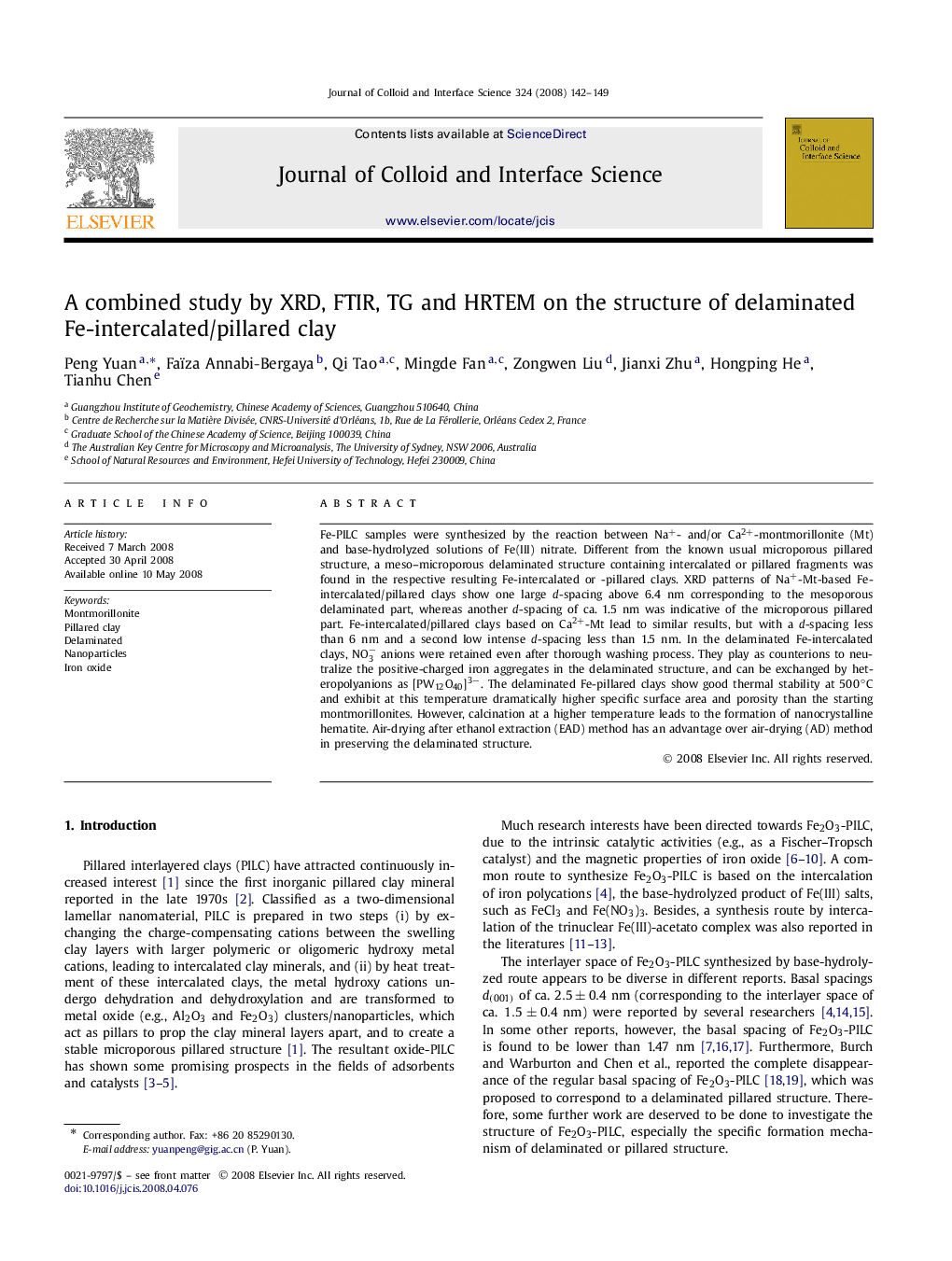| Article ID | Journal | Published Year | Pages | File Type |
|---|---|---|---|---|
| 611098 | Journal of Colloid and Interface Science | 2008 | 8 Pages |
Fe-PILC samples were synthesized by the reaction between Na+- and/or Ca2+-montmorillonite (Mt) and base-hydrolyzed solutions of Fe(III) nitrate. Different from the known usual microporous pillared structure, a meso–microporous delaminated structure containing intercalated or pillared fragments was found in the respective resulting Fe-intercalated or -pillared clays. XRD patterns of Na+-Mt-based Fe-intercalated/pillared clays show one large d-spacing above 6.4 nm corresponding to the mesoporous delaminated part, whereas another d-spacing of ca. 1.5 nm was indicative of the microporous pillared part. Fe-intercalated/pillared clays based on Ca2+-Mt lead to similar results, but with a d-spacing less than 6 nm and a second low intense d-spacing less than 1.5 nm. In the delaminated Fe-intercalated clays, NO−3 anions were retained even after thorough washing process. They play as counterions to neutralize the positive-charged iron aggregates in the delaminated structure, and can be exchanged by heteropolyanions as [PW12O40]3−. The delaminated Fe-pillared clays show good thermal stability at 500 °C and exhibit at this temperature dramatically higher specific surface area and porosity than the starting montmorillonites. However, calcination at a higher temperature leads to the formation of nanocrystalline hematite. Air-drying after ethanol extraction (EAD) method has an advantage over air-drying (AD) method in preserving the delaminated structure.
Graphical abstractSchematic representation of the structure of delaminated Fe-intercalated/pillared montmorillonite, which consists of a mesoporous delaminated structure containing microporous intercalated or pillared fragments.Figure optionsDownload full-size imageDownload as PowerPoint slide
